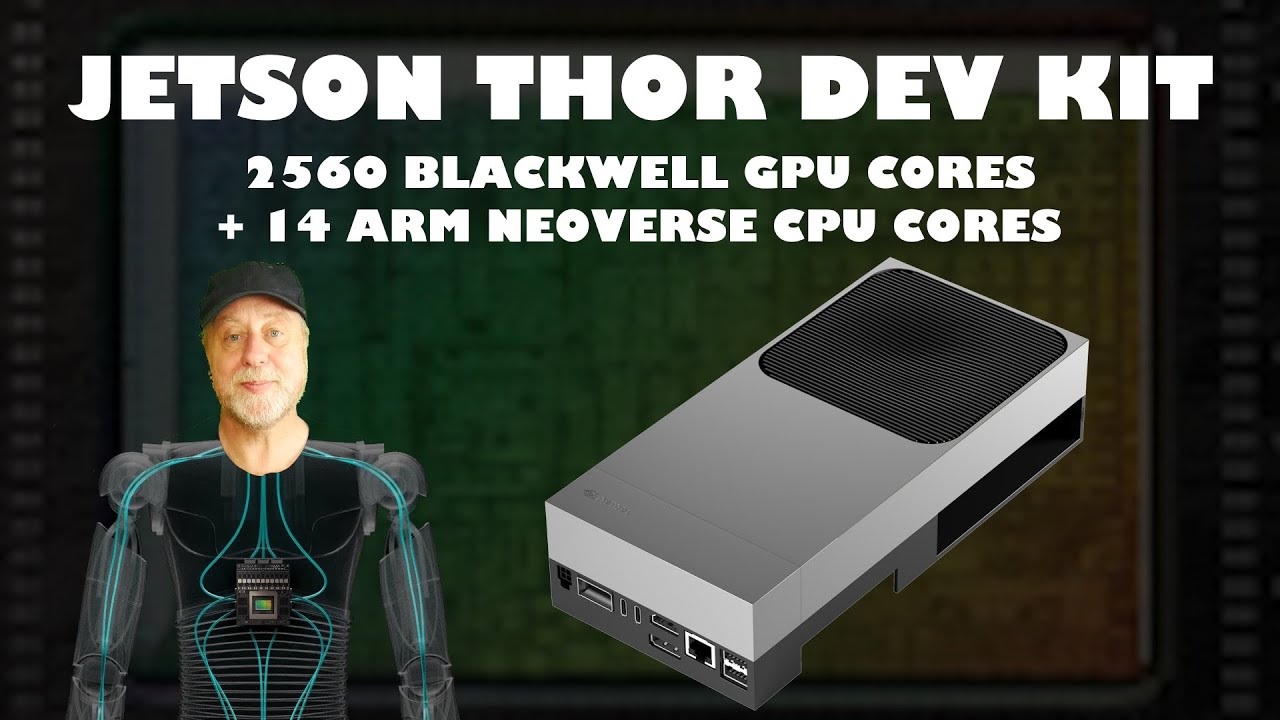Nvidia’s Jetson Thor development kit, featuring the powerful Jetson T5000 module with Blackwell GPU and ARM Neoverse V3 CPUs, provides a versatile platform optimized for AI-driven robotics and physical AI applications, supported by advanced software like Isaac SIM and the Groot platform for realistic simulation and humanoid robotics acceleration. With high-performance specs including 128 GB unified memory and extensive connectivity, it excels in tasks from complex robot simulation to advanced computer vision and large language model processing, marking a significant advancement for AI and robotics developers.
Nvidia has introduced the Jetson Thor development kit, designed primarily for AI and robotics developers. At its core is the Jetson T5000 module, featuring a powerful Blackwell GPU architecture similar to the RTX 50 series, combined with high-performance ARM Neoverse V3 CPU cores. The development kit includes a compact motherboard with multiple connectivity options such as HDMI, DisplayPort, Ethernet (including 25 Gb and QSFP28 connectors), USB 3.2, Wi-Fi 6, and a 1TB NVMe drive, all housed in a convenient box with cooling solutions. This setup provides developers with a versatile platform to build and test AI-driven robotic systems.
The Jetson Thor is not intended as a consumer PC or gaming device, despite its powerful GPU. It runs Ubuntu Linux on ARM architecture and is optimized for physical AI applications and robotics. Nvidia supports the hardware with a robust software ecosystem, including Isaac SIM, a high-fidelity robotics simulator that allows developers to emulate real-world physics, sensors, and robot interactions virtually. This enables efficient development and testing without the need for physical robots, accelerating innovation and reducing costs.
Another key software component is Nvidia’s Groot platform, which accelerates humanoid robotics by leveraging general-purpose foundation AI models. Groot N1, an open-source model, can run on the Jetson Thor and interact with Isaac SIM to simulate complex robotic tasks. This integration creates a feedback loop where the simulated robot sends sensor data to the Jetson Thor, which processes it and sends back motor commands, enabling realistic and intelligent robot behavior in a virtual environment.
The Jetson Thor also excels in advanced computer vision tasks, demonstrated by its video search and summarization system (VSSS). This system enhances traditional object detection by analyzing short video clips with a vision-language model, allowing users to ask detailed questions about the scene, such as identifying specific actions or objects. This capability significantly improves the intelligence and responsiveness of AI vision systems in applications like warehouse inspection or traffic monitoring.
Performance-wise, the Jetson Thor is a powerhouse for running large language models (LLMs). With 128 GB of unified memory, 2560 CUDA cores, and 14 ARM CPU cores, it can efficiently run and serve large AI models, including OpenAI’s 120 billion parameter model, achieving impressive token processing speeds. Compared to previous Jetson generations, it offers dramatically higher AI compute power and better energy efficiency. Available now for around $3,499, the Jetson Thor development kit represents a significant leap forward for developers working on cutting-edge AI and robotics projects.
